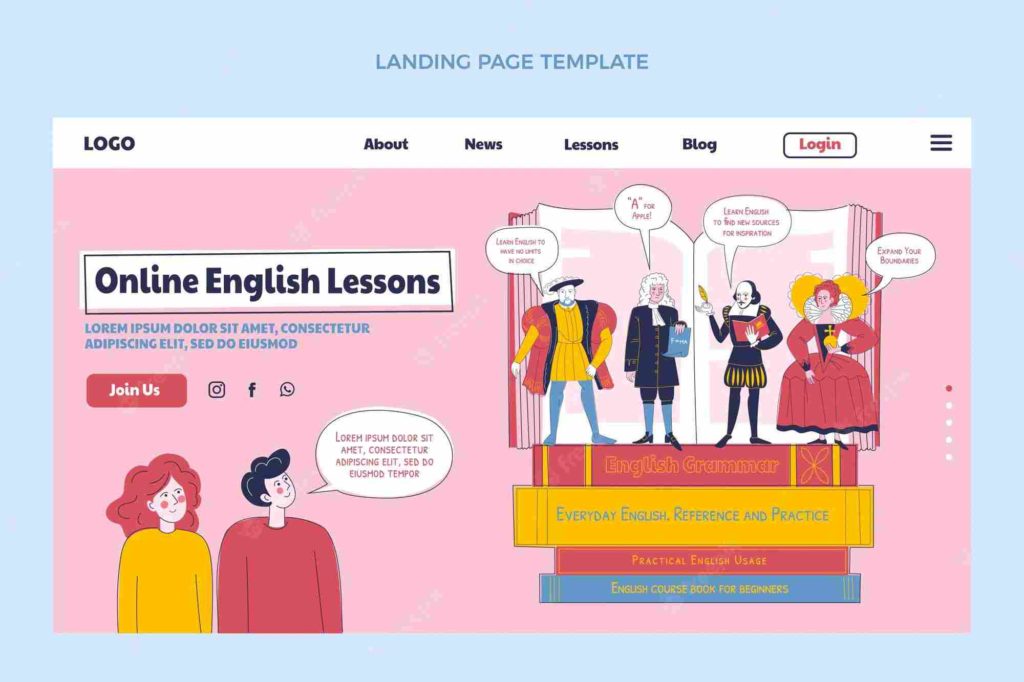English grammar for students of Spanish is a minefield. Both English and Spanish are complex languages with many rules, exceptions and nuances that can easily trip you up. This article aims to clear up some of the most common grammar errors made by Spanish learners, as well as give you some useful tips on how to improve your English and grammar skills in general.
Even if you’re already fluent in Spanish, reading and writing English at a high level will undoubtedly improve your communication skills and increase your employ ability opportunities outside of academia or your native country. It is also an excellent way to practice your English speaking skills when it isn’t necessary to communicate anything in real life (e.g. textbooks, textbooks, homework assignments, tests…). Read on to learn more!
Source of Image: Freepik
Don’t use ‘to be’ in the wrong situations
One of the main grammar mistakes that Spanish learners make is that they overuse the verb ‘to be’ incorrectly in their essays, essays, essays. The verb ‘to be’ doesn’t always have anything to do with the state of being. We can use “to be” to express that something is true or correct, or that someone or something is existing or existing at the time. The correct English expression is ‘is’.
For example:
– Juan is a student. (Juan is a student ‘is’ true.)
– Bryan is a student ‘is’ true. (Bryan is a student ‘is’ correct.)
Sometimes Spanish learners use ‘to be’ when they mean ‘is’. They might use it incorrectly to replace ‘is’ in a sentence when the two verbs have different meanings.
– I am a student. (I am a student.)
– I am a student because I want to be a doctor. (I want to be a doctor.)
Use the right form of ‘to have’
In Spanish, we use the verb ‘to have’ to express what something contains (e.g. ‘to have’ an apple contains an apple), or what someone has done to earn something (e.g. ‘to have’ an exam is to have successfully finished a written test) The verb ‘to have’ has two forms in English: ‘have’ and ‘have got’. We use the verb ‘to have’ to show possession (‘to have’ something refers to holding it). Whereas we use ‘to have got’ to show that someone earned something (‘to have got’ something refers to having it because of doing something).
These examples use ‘to have’ in the sense of ‘to possess’:
– He has an apple. (He has an apple ‘to possess’.)
– I have an apple. (I have an apple ‘to possess’.) – She has an apple. (She has an apple ‘to possess’.)
– My teacher has an apple. (My teacher ‘to possess’ an apple.)
– The exam has been written. (The exam has been written ‘to earn’.)
– I have got an A in the exam. (I ‘have got’ an A in the exam.)
Don’t confuse ‘to be’ and ‘to have’
In Spanish, we use the verb ‘to be’ to describe the state of being of something, or to describe that something exists (e.g. ‘to be’ beautiful is to be beautiful, and something is ‘to be’ has water if you’ve found water). In English, the word ‘is’ is used for both of these purposes.
It is important to distinguish between the two meanings of ‘to be’ in Spanish because the wrong verb is used for the state of being of something.
Don’t use the wrong gender pronoun in English
Spanish learners sometimes get confused about the correct gender pronoun to use in English sentences. We use Spanish pronouns to replace the nouns in a sentence, just as their English counterparts. There are only two gender pronouns in English: ‘he’ and ‘she’.
The most common mistake that Spanish learners make with the pronoun ‘they’ is that they turn it into a plural pronoun (‘they’ vs. ‘they are’ or ‘they have’). Here are some examples of this mistake:
– I want them to be happy. (‘They want to be happy’ is incorrect. ‘They want to be happy’ is correct.)
– I want they to be happy. (‘They want to be happy’ is incorrect. ‘They want to be happy’ is correct.)
Avoid using “que” as a conjunction in English
A conjunction is a word that joins two parts of a sentence together. The most common conjunction in English is ‘and’. We can also use many other conjunctions, but they are less common and are generally more specific. Que is a very specific and uncommon conjunction. It is frequently misused in English sentences, particularly when it is mistaken for the word ‘that’.
Don’t mistake “que” for ‘that’ and use it in place of ‘which’ or ‘who’. – The book is beautiful. – The book is beautiful and inexpensive. – The book is beautiful which is interesting. – The book is that interesting and beautiful. – The book is that which is interesting and beautiful.
Keep an eye out for awkward grammar errors
One of the best ways to improve your grammar skills is to read, read, read! You can easily find books on grammar and composition in English that are suitable for self-study, or you can check out your local library or bookstore.
If you’re reading something in Spanish, try to place yourself in the shoes of a native English speaker. Would they be able to understand what you’re trying to say, or do they need to know that you made a grammar error? You should look out for these errors in the books you read, the essays you write and the conversations you overhear. If you ever notice yourself making an awkward grammar mistake, don’t panic! You can easily correct it and avoid making the same error again.
Other blogs about learning English!

